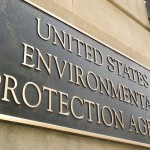The EPA received $8.2 billion in taxpayer money this year for its budget. While some of this goes to important environmental initiatives, much of it is wasted – or worse, used to create burdensome regulations that take even more money from the private sector. Below, we list four of the most egregious ways this taxpayer money is wasted.
1) Incompetent or fraudulent employees
The EPA employs more than 16,000 full-time employees. A slew of them have recently been found to be incompetent or negligent. The latest example comes from the employee who was caught spending his workday watching porn on his taxpayer-issued computer. Because it is so difficult to fire a federal employee, this individual continued to draw his $120,000 paycheck, even after he was caught red-handed.
Recent investigations have also uncovered EPA employees receiving unauthorized bonuses, committing fraud, and using agency credit cards for personal expenses. These abuses are in addition to ex-top official John Beale’s defrauding taxpayers of almost $1 million by skipping work pretending to be a CIA agent and former administrator Lisa Jackson, among others, conducting official business on secret email accounts.
And these are only the examples we know about. Given what the Inspector General has called the lax management culture at the EPA, these abuses may only be the tip of the iceberg.
2) Antiquated records retention practices
In an age when virtually all businesses and organizations store their records digitally, the EPA still uses paper, at a big cost to taxpayers. As of December of last year, the EPA had a paper inventory of 18.4 million publications, which costs for the taxpayer equal $1.2 million per year, not to mention the additional $360,000 in yearly storage leasing costs. The inspector general, stating the obvious, said that the EPA could put taxpayer money to better use by reducing this inventory. (Not to mention saving a few trees!)
3) International grants
The EPA gives grants of up to a million dollars each year to foreign countries and international organizations. This may be a violation of its mandate to protect the domestic environment. In 2011, it gave China nearly one million taxpayer dollars to go to various environmental initiatives. In recent years, it has also given $1.2 million to the United Nations to promote clean fuels and $700,000 to Thailand to recover methane gas at pig farms.
And, earlier this year, EPA announced another $200,000 in taxpayer grants to Mexico to help its towns go green. Do U.S. taxpayers know that their tax dollars are going to fund environmental initiatives in other countries?
4) Burdensome regulations
The most egregious way that the EPA wastes taxpayer money is by implementing burdensome regulations, which cost the economy an astounding $350 billion per year. Its new ozone regulations alone are expected to cost businesses $20 to $90 billion annually, making it the single most expensive U.S. regulation ever.
EPA’s recent coal emission standards are so stringent that it’s nearly impossible to build a new coal power plant without using unproven carbon capture and storage technology. The capital cost of replacing conventional power plants with this technology is projected to be over $2.2 trillion.
These regulations don’t just cost businesses—they translate into higher prices for all of us. When the impact of what the EPA does with its taxpayer funding is taken into account, the U.S. taxpayer likely wishes more EPA employees would simply skip work and pretend to be CIA agents.





